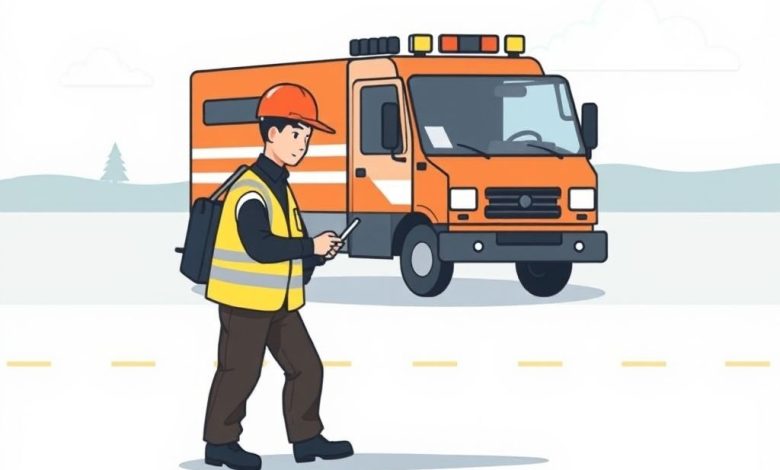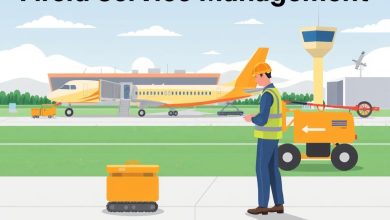Field Service Management for Roadside Assistance Dispatch

Introduction
Field Service Management (FSM) systems have revolutionized how roadside assistance dispatchers coordinate emergency responses and manage vehicle repairs. These digital platforms streamline operations, enhance efficiency, and improve customer satisfaction. In this article, we’ll explore the key aspects of FSM for roadside assistance dispatch, its benefits, challenges, and best practices.
- The Evolution of Roadside Assistance Dispatch
- Key Components of Field Service Management Systems
- Benefits of Field Service Management for Roadside Assistance Dispatch
- Challenges in Implementing Field Service Management Systems
- Best Practices for Implementing Field Service Management Systems
- Phased Implementation
- Comprehensive Training Program
- Regular Audits and Performance Monitoring
- Continuous Improvement
- Conclusion
The Evolution of Roadside Assistance Dispatch
Roadside assistance dispatching has come a long way since its inception. From manual phone calls to modern digital solutions, the industry has adapted to technological advancements. Today, FSM systems play a crucial role in managing roadside emergencies efficiently.
Traditional Methods vs. Modern Solutions
In the past, roadside assistance dispatchers relied heavily on paper-based systems, phone calls, and basic computer software. This approach had several limitations:
- Lack of real-time data
- Difficulty in tracking vehicles and technicians
- Limited ability to prioritize jobs
- Manual scheduling leading to human errors
Modern FSM systems address these issues by providing:
- Real-time data on vehicle locations and technician availability
- Automated job prioritization based on urgency and distance
- Integrated scheduling tools for efficient resource allocation
- Mobile apps for technicians to update job statuses on-the-go
Key Components of Field Service Management Systems
FSM systems for roadside assistance dispatch typically include several essential components:
Job Management
Job management is at the heart of any FSM system. It involves creating, assigning, and tracking service requests.
- Create new jobs with detailed information about the vehicle and issue
- Assign jobs to available technicians based on proximity and skillset
- Track job status from initial dispatch to completion
- Generate reports on job performance and technician productivity
Scheduling
Scheduling is critical for efficient resource allocation in roadside assistance.
- Create schedules for technicians based on their availability and skills
- Automatically assign jobs to scheduled time slots
- Allow for last-minute adjustments due to unexpected issues
- Integrate scheduling with GPS tracking for real-time updates
Dispatch Console
The dispatch console is the nerve center of the FSM system.
- Monitor all active jobs in real-time
- Prioritize jobs based on urgency and distance
- Communicate with customers and technicians through integrated messaging
- Provide real-time traffic updates to optimize route planning
Reporting and Analytics
Reporting and analytics help managers make data-driven decisions.
- Generate reports on job performance, technician productivity, and customer satisfaction
- Analyze trends to identify areas for improvement
- Set key performance indicators (KPIs) to measure success
- Create custom dashboards for quick insights into operations
Benefits of Field Service Management for Roadside Assistance Dispatch
Implementing FSM systems brings numerous benefits to roadside assistance operations:
Improved Efficiency
FSM systems automate many manual processes, reducing administrative overhead and allowing dispatchers to focus on high-value tasks.
- Automated job prioritization ensures urgent cases receive prompt attention
- Real-time tracking enables better resource allocation and reduced response times
- Integrated scheduling optimizes technician utilization and reduces idle time
Enhanced Customer Experience
Modern FSM systems contribute significantly to improved customer satisfaction.
- Real-time updates keep customers informed about their service requests
- Automated notifications reduce communication breakdowns
- Integration with GPS tracking allows for accurate estimated arrival times
Increased Productivity
Technicians equipped with mobile apps can update job statuses quickly, ensuring seamless coordination between dispatchers and field staff.
- Mobile apps allow technicians to mark jobs as completed or request additional resources
- Automated check-ins enable dispatchers to monitor progress in real-time
- Integration with vehicle diagnostics facilitates faster troubleshooting
Cost Reduction
By optimizing routes and reducing response times, FSM systems can lead to significant cost savings.
- Reduced fuel consumption due to optimized routing
- Lower labor costs through improved scheduling and resource allocation
- Potential for increased first-time fix rates, reducing repeat visits
Challenges in Implementing Field Service Management Systems
While FSM systems offer numerous benefits, they also present some challenges:
Initial Investment and Training
Implementing a new FSM system requires significant upfront investment in hardware, software, and training.
- Costs associated with purchasing licenses, hardware, and integration with existing systems
- Time required to train dispatchers and technicians on new workflows
- Potential resistance to change from staff accustomed to traditional methods
Data Security and Privacy Concerns
Roadside assistance services handle sensitive customer information, requiring robust security measures.
- Ensuring secure storage and transmission of customer data
- Compliance with data protection regulations like GDPR
- Protecting against cyber threats and unauthorized access
Integration with Existing Systems
Many organizations have legacy systems that may need to be integrated with the new FSM platform.
- Challenges in connecting disparate systems
- Potential data migration issues from old to new systems
- Ensuring seamless communication between different departments and teams
Best Practices for Implementing Field Service Management Systems
To maximize the benefits of FSM systems while minimizing challenges, consider these best practices:
Phased Implementation
Implement FSM systems gradually, starting with core functionalities before expanding features.
- Begin with job management and scheduling modules
- Gradually introduce reporting and analytics capabilities
- Phase in mobile apps for technicians last
Comprehensive Training Program
Develop a comprehensive training program for all staff members involved in roadside assistance dispatch.
- Include both technical training on the FSM system
- Provide soft skills training on effective communication and customer service
- Offer role-specific training for dispatchers, managers, and technicians
Regular Audits and Performance Monitoring
Conduct regular audits and performance monitoring to ensure the FSM system is meeting its intended goals.
- Set clear KPIs and track them regularly
- Conduct periodic user feedback sessions
- Analyze data to identify areas for improvement and optimize workflows
Continuous Improvement
Stay updated with the latest developments in FSM technology and continuously refine processes.
- Attend industry conferences and workshops
- Engage with other organizations using similar systems
- Encourage innovation and suggestions from staff members
Conclusion
Field Service Management systems have transformed the landscape of roadside assistance dispatch operations. By leveraging advanced technology, these systems offer significant improvements in efficiency, productivity, and customer satisfaction. While implementation may present some challenges, the long-term benefits far outweigh the initial investment.
As the field service industry continues to evolve, it’s crucial for roadside assistance providers to stay ahead of the curve by embracing innovative FSM solutions. By doing so, they can deliver exceptional service quality, reduce operational costs, and maintain their competitive edge in an increasingly digital world.
The future of roadside assistance lies in intelligent, connected systems that seamlessly integrate technology with human expertise. As FSM systems continue to advance, we can expect even more sophisticated solutions that will further revolutionize how emergency responses are coordinated and vehicle repairs are managed.




